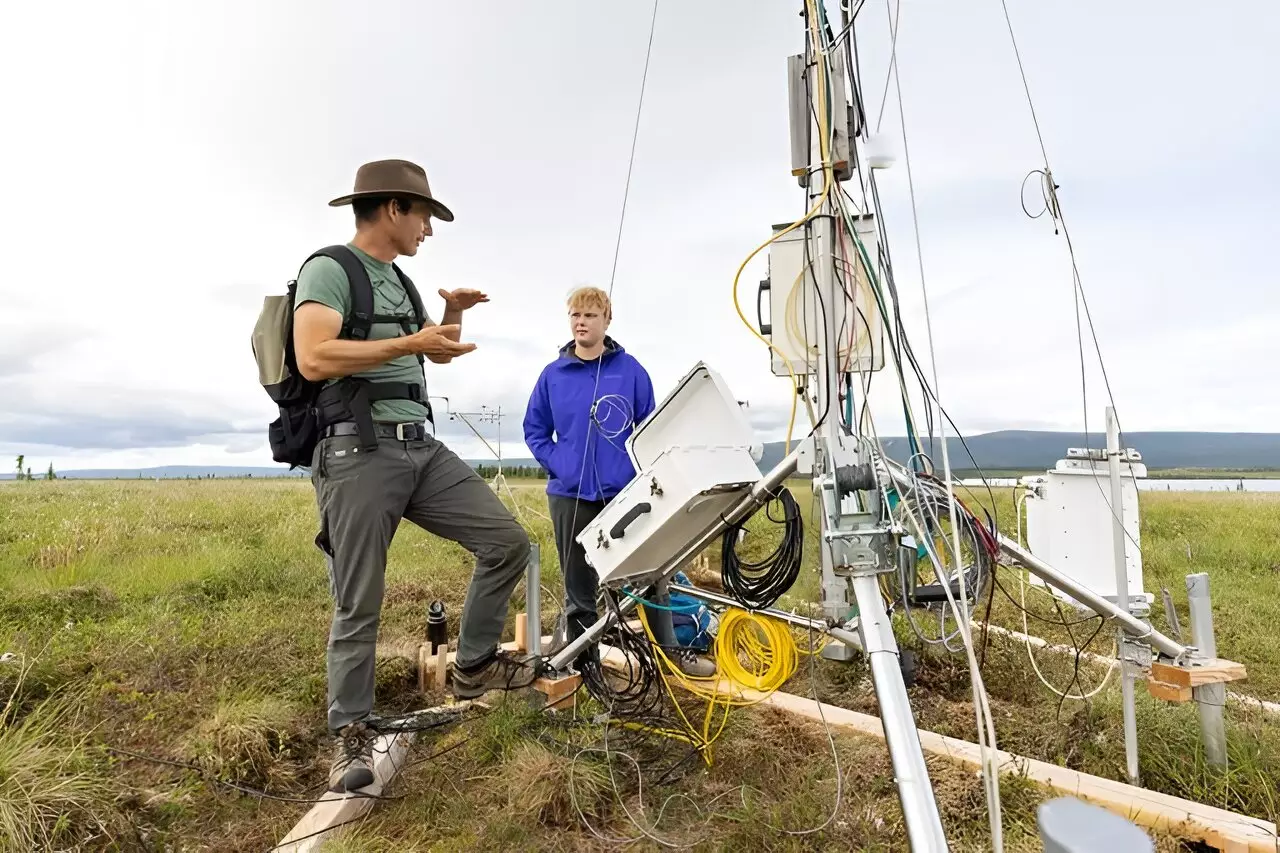The Arctic tundra, often viewed through a narrow lens of cold and desolation, serves a far more critical role in the global climate system. Recent research led by Ted Schuur, alongside a collaboration of global scientists within the Permafrost Carbon Network, unravels the intricate biological processes happening in this frigid expanse and challenges our perception of carbon dynamics at play within the warming Arctic. With ecosystems that encapsulate a significant portion of the world’s soil organic carbon—approximately one-third despite occupying only 15% of the Earth’s soil area—the tundra’s health is paramount as we grapple with the escalating climate crisis.
The tundra acts as both a sink and source for carbon, wherein carbon sequestered through plant growth during photosynthesis is later released via processes like decomposition. This cycling phenomena can alter the trajectory of climate change itself. Notably, the alarming rate at which Arctic permafrost is warming—three to four times faster than the global average—has raised concerns over a potential tipping point that could drastically enhance greenhouse gas emissions from these vulnerable ecosystems.
The Accelerating Rate of Carbon Emissions
Current climate models have yet to fully account for the carbon emissions stemming from thawing permafrost. As human activity remains the predominant force behind greenhouse gas emissions, the potential emissions from the Arctic could add an unnerving 10-20% to projected climate impacts by 2100. This revelation points to a staggering consequence of underestimating the permafrost’s influence on climate dynamics. With this extra carbon contributing to atmospheric pressures akin to a large industrialized nation, the implications for global warming intensify.
This oversight emphasizes the urgent need for more ambitious carbon reduction targets beyond those set by the Paris Agreement. The international community must grapple with the reality that without a concerted effort to address the permafrost’s warming and subsequent emissions, achieving stable climate conditions will be virtually impossible. The stark reality is that the very agreements designed to mitigate climate consequences may fall short due to a blind spot regarding Arctic emissions.
Researching the Heart of Carbon Cycling
Published findings from Schuur and his collaborators shine a light on the mechanisms at play within permafrost ecosystems. In a comprehensive analysis featured in *Nature Climate Change*, researchers evaluated decades of carbon dioxide flux data across 70 sites, uncovering a troubling trend: while non-permafrost ecosystems benefit from increased summer plant growth, Arctic permafrost regions exhibit notable carbon losses in the non-growing season. This interruption suggests that warmer temperatures are enabling a more vigorous release of carbon, which is fundamentally transforming our understanding of these ecosystems.
Notably, the phenomenon of increased emissions during fall and early winter stands as a telltale marker of the new climate normal, drawing attention to the complexity of interactions between seasonal changes in temperature, soil dynamics, and carbon output. The research illuminates the contrasting behavior of permafrost versus non-permafrost ecosystems, thus emphasizing a need for a clearer grasp of seasonal variations to help inform adaptive management of carbon resources.
Interpretation Through Innovative Experiments
Further insight emerged from an experiment documented in *Nature*, utilizing miniature greenhouses to simulate warmer conditions across 28 tundra sites. The results indicated a mean temperature increase correlating to a staggering 30% uptick in ecosystem respiration. This stark data confronts previously held assumptions about Arctic resilience and highlights the necessity of addressing local environmental factors such as water and nutrient availability, which can significantly alter carbon balance within these regions.
As such, controlled experiments lend critical perspective on future forecasts, presenting both a stark warning and invaluable knowledge regarding Arctic ecosystems. Understanding these changes enables policymakers to develop strategies that are not only reactive but also proactive in mitigating anticipated shifts that would further exacerbate climate change.
The Collaborative Nature of Permafrost Research
Yet, the pursuit of knowledge about Arctic carbon dynamics faces unprecedented challenges exacerbated by geopolitical conflicts, specifically the Russian invasion of Ukraine. The integrity of permafrost research has been endangered, with a loss of access to a vital network of observation sites that provide insight into the region’s ecological variability. The removal of Russian sites from collaborative data sets compromises the richness of information necessary to understand ecosystem variability fully.
As academics from around the globe strive to compensate for these losses, the complexity of generating actionable insights from Arctic data comes into sharper focus. The interconnectedness of scientific endeavors highlights the collective urgency to restore and expand the networks of observation, ultimately ensuring that crucial information about the tundra remains intact amid rapid climate shifts.
As we navigate an uncertain future, the Arctic stands as a barometer for our climate fate. Understanding and addressing the ramifications of permafrost thaw can no longer be sidelined; action is imperative for successful climate mitigation efforts on a global scale.

